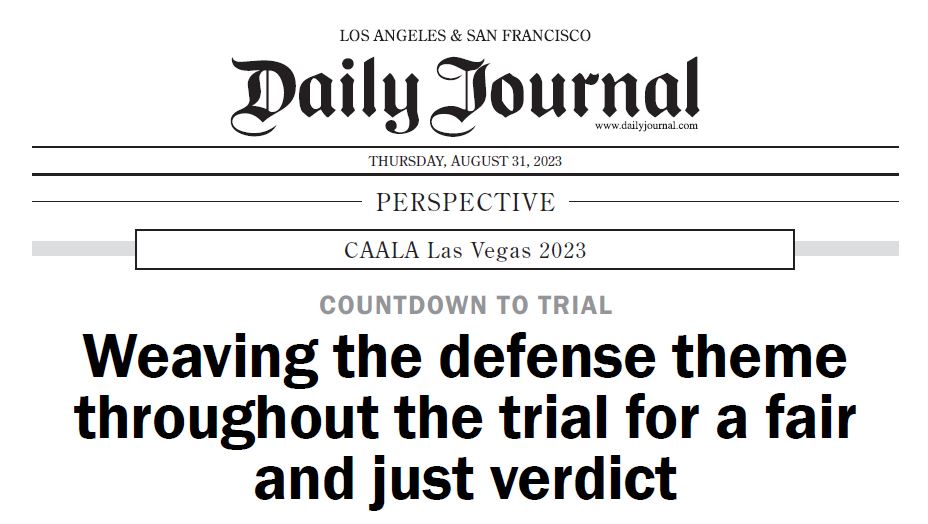By Nicole Whyte
At trial, plaintiff lawyers often craft a trial theme aimed at evoking sympathy for the plaintiff and anger towards the defendant. To effectively respond, the defense team must identify and deploy their counter theme early in the case. The defense theme should permeate every phase of the trial, and where possible, counter the plaintiff’s allegations. In cases where the truth supports the plaintiff’s claims, accepting responsibility and demonstrating fairness and reasonableness is crucial. Core values, such as honesty, honor, and personal responsibility, can form the foundation of the defense theme. A clear and concise theme, stated in one sentence, should guide the defense’s approach throughout the trial.
Motions in limine play a crucial role in controlling the facts presented to the jury. The defense team should craft these motions thoughtfully, interweaving the defense theme and focusing on the specific evidence they seek to exclude. These motions can shape the outcome of the trial and establish credibility with the judge.
They are particularly helpful in limiting experts who rely on unreliable or “junk” science. In the alternative, always request an Evidence Code section 402 hearing outside the presence of the jury. Motions in limine on pivotal issues, such as seeking to exclude certain key witnesses for failure to disclose or key experts for lack of credibility, can also contribute to successful settlement negotiations if filed early. ‘Standing’ motions in limine, such as excluding settlement discussions and references to insurance, should be stipulated in advance to avoid wasting the court’s time.
Jury instructions and verdict forms should never be an afterthought. By reviewing all relevant jury instructions at the beginning of the case, the defense can identify what the plaintiff must prove and tailor their defense accordingly. Attention should also be given to key defense instructions, as they guide what the defendant must prove. Discovery should be drafted with jury instructions in mind, and opening and closing arguments can incorporate language from the instructions. The power of jury instructions as a weapon for appeal should not be overlooked. Consider enlisting the help of appellate counsel in drafting instructions and always have a court reporter present during argument to preserve the record.
When preparing witnesses for trial, create an outline rather than a script to ensure key points are elicited and relevant documents are introduced. Always consider the possibility of the plaintiff’s attorney calling the defendant as a witness under Evidence Code section 776. If possible, have another lawyer practice a rigorous cross examination on the witness. Witnesses should understand the overarching narrative and theme of the case and their role in the presentation. Sharing the opening statement with witnesses can help align their understanding and provide opportunities for clarification. Optics, including body language, should be considered, and video recording of mock testimony can be useful.
Utilizing focus groups and mock trials early in the trial preparation process can yield valuable insights. These tools assist in case evaluation, settlement discussions, discovery, issue identification, theme development, persuasive argument design, and assessing the effectiveness of witnesses. They can also aid in analyzing damages and identifying the ideal jury profile.
Weaving the defense theme throughout the trial is crucial to obtaining the best possible outcome. By strategically incorporating the theme in motions in limine, jury instructions, witness preparation, and trial strategy, the defense team can effectively counter the plaintiff’s narrative. Careful attention to detail and proactive measures, such as focus groups and mock trials, can greatly enhance the defense’s chances of success.
Nicole Whyte is a partner at Bremer Whyte Brown & O’Meara. She is also one of the speakers on the Countdown to Trial Panel at the Consumer Attorneys Association of Los Angeles (CAALA) conference, Thurs., Aug. 31.

